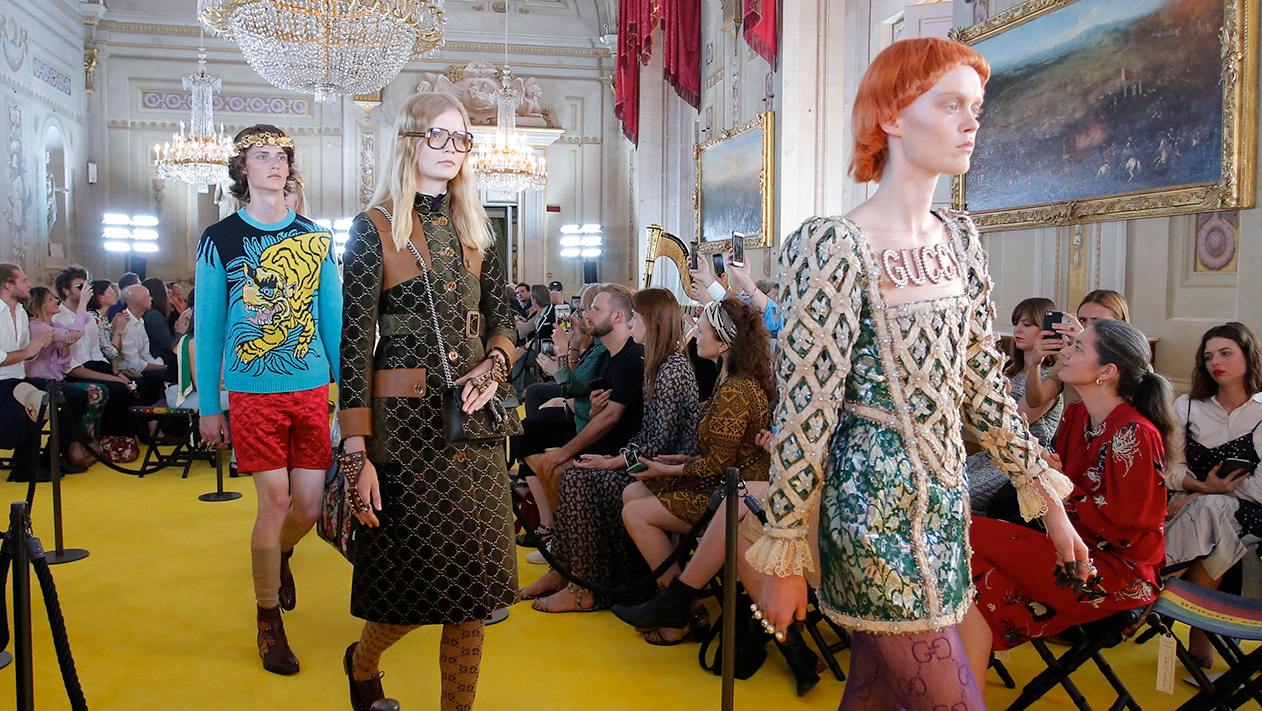This article was originally published by i-D UK.
Festina lente: make haste slowly. It was the motto of the Medici dynasty, who humbly borrowed it from Augustus and Titus — two of the mightiest Roman emperors. “I am connected to the Renaissance, that’s why I’m connected to the Pitti Palace,” Alessandro Michele said on Monday evening in Florence, after he besieged the 16th-century Medici seat for Gucci‘s cruise 18 show. He could easily adopt said motto for his reign at Gucci — which also hails from Florence — because the meticulous nature of the grandiose dream world he’s created at the brand, much like those Renaissance bankers who conquered Florence, is as shrewd as it is romantic. This collection wasn’t that different from any of his past offerings — a sensory overload of historical, fictional, and quirky references Michele sums up as “eccentricity” — but this designer isn’t churning out trendy fodder for the seasons. He’s building an empire; slowly but surely.


With the Wall Street of the Renaissance as backdrop, that notion was never clearer than last night when the whimsical Gucci girls and boys he first introduced us to nearly three years ago now processed through the halls of the Pitti Palace, “Guccified” — as some slogan garments read — in Michele’s wealth of embellishment and confection. Brocades, jacquards, tapestries, prints — you’d need a month in the showroom to give each beautifully crafted piece the detailed description it deserves. But that’s not Michele’s intention. True to form, backstage he was more concerned with the sum of all those parts: the reflection of history in the present, and whatever you want to take from that. “Everything was so rare in this time in Florence,” he said, referring to the Renaissance. “It was really like being in Napa Valley.” He must have meant Silicon Valley, the computer hub of the world and center of innovation.
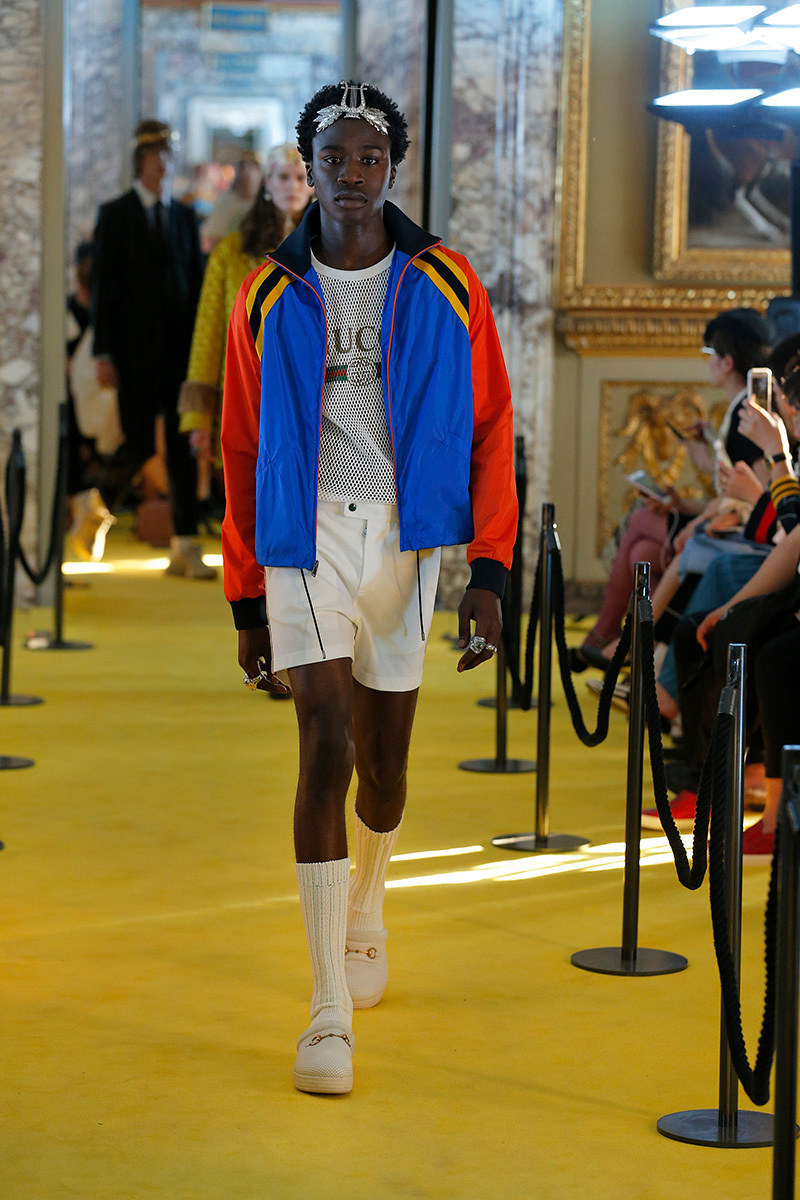

Five hundred years ago, Florence represented that same playground. This the city that allowed Leonardo da Vinci to experiment and create groundbreaking art and inventions, and all the exuberant freedom he needed to do so. In other words, the old Florentines knew how to party, how to “Guccify yourself,” to revisit the meaning of that T-shirt. Which was: “that you have to make everything crazy, you know?” Michele said, doe-eyed and bearded with his Bronzino pageboy bob. “It’s a new time. You can do what you want.” His Guccification is certainly best-served bonkers. Some of the pearly headpieces and gilded Grecian laurel wreaths he graced the Pitti Palace with were really quite mad, and those are the things that imprint themselves in your memory watching a Michele show, where the word multi-faceted doesn’t quite suffice. Paradoxically, he’s also at his best when he’s succinct — a Renaissance cocktail dress with classically puffed and paned sleeves in a diamond pattern was the simplest and greatest look of the collection, perhaps just for the fact it said it all in such few words.

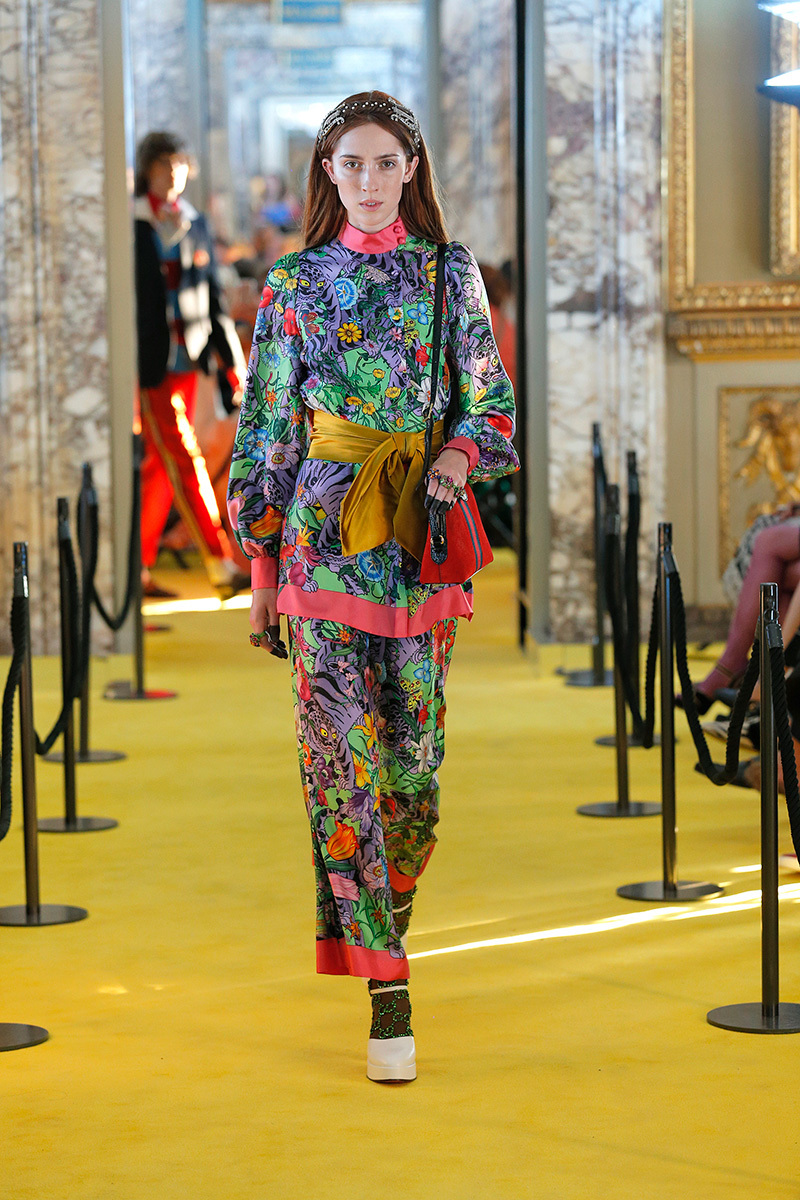
The Gucci logo does that, too. “I always say it’s the hieroglyph of the company. It’s the biggest decoration; kind of a pop symbol. It makes everything powerful,” Michele said. This time he used it to cement the Greek undertone of the collection — much like writing on the wall — which was first intended to be designed for the Acropolis. When Michele’s dream venue fell through, he chose the next best thing, the Pitti Palace, where every hall is named after a Greek god. The show that never was spawned various Grecian elements in the show that was: a few Helen of Troy ball gown numbers, meander patterns here and there, and those laurel crowns, which made every boy resemble the statues in the dreamy Boboli Gardens behind the palace. “I always try to inject some rock ‘n’ roll into the collection. That’s why I was thinking of Pucci and all the models of the time,” Michele said, referring to the old Florentine dynasties and their colorful characters of which the Pucci family were part. “They were the most eccentric and rock ‘n’ roll at the time. And it’s still in our culture. It’s still here. It’s something I adore, the idea that the classical pieces of our culture — Greek and Roman — are still inside.”
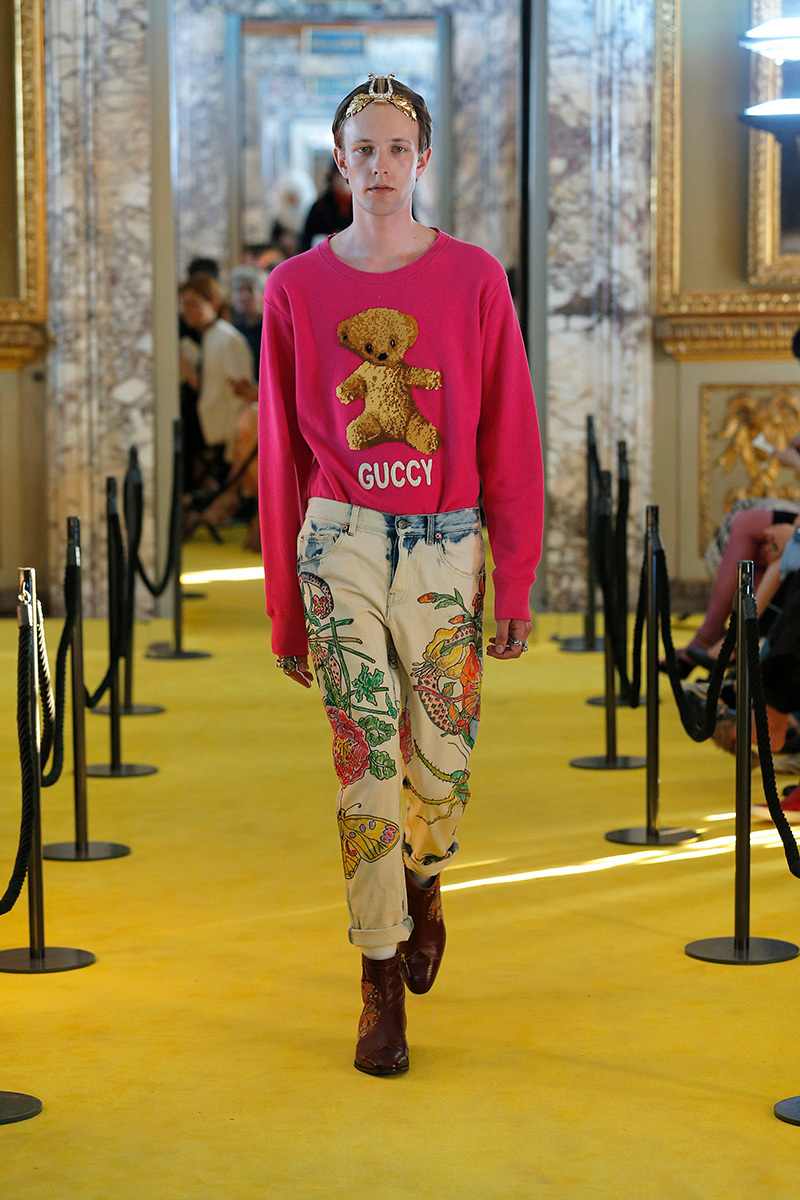
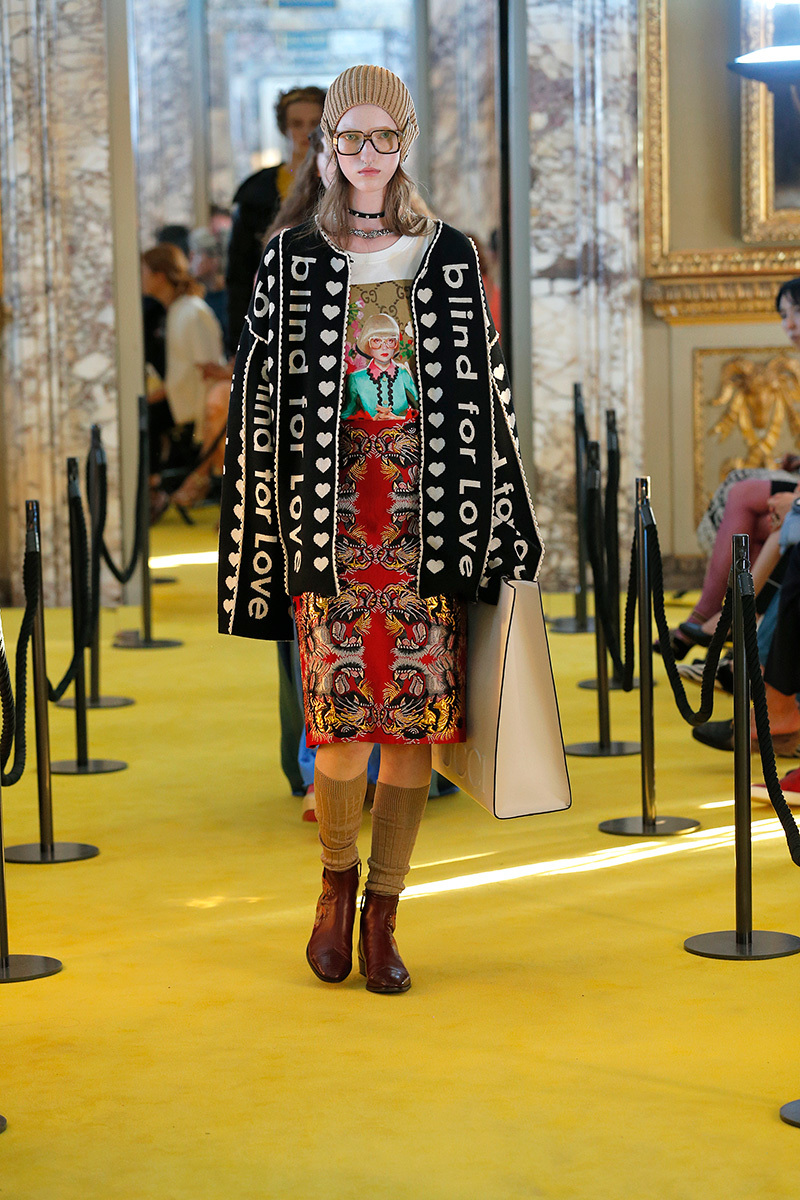
In a cruise 18 season that’s revolved around the roots of cultures — Dior’s tribal Americana, Louis Vuitton’s ode to Japanese costume, and Chanel’s Greek goddesses — Gucci reflected a relevant mood. It’s that old chestnut about understanding your past before you can understand your future, and in a time when the global community is up in the air, that idea is hardly antiquated. Festina lente indeed. As for that purposely misspelled “Guccy” logo Michele premiered on Monday night? Press was chased away before we could get the answer, but it seemed like the designer’s ultimate statement on the power of his Gucci era. Misspelled or not, the power of Michele’s Medici-like brand value remains the same.


Credits
Text Anders Christian Madsen
Photography Dan Lecca, courtesy Gucci
